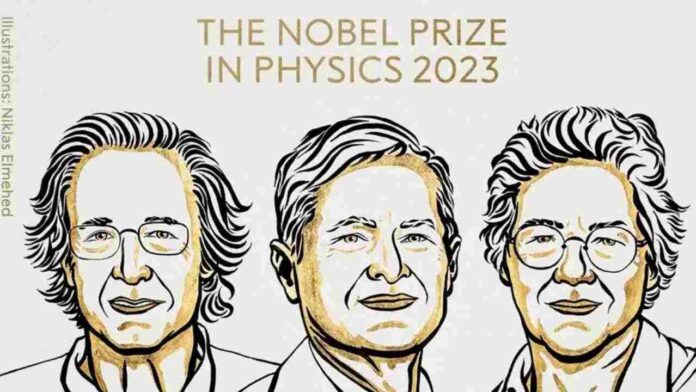Three researchers were awarded the Nobel Prize in Physics in 2023 for their work in developing ultrashort light pulses that provide a window into the inner workings of atoms.
The Royal Swedish Academy of Sciences, which is responsible for selecting the Nobel laureates in physics, announced Tuesday (Oct. 3) that Pierre Agostini, Ferenc Krausz, and Anne L’Huillier would share the 11 million Swedish krona ($1.02 million) prize for developing a method to generate pulses of light measured in attoseconds—one quintillionth of a second.
An attosecond is a period of time so brief that it can be used to see the motion of electrons and molecules; it is analogous to a second in terms of the age of the universe.
At the press conference, Anne L’Huillier, a physicist at Lund University in Sweden and only the fifth woman to win the prize, claimed that she found out while she was in the middle of a class.
“The last half hour of my lecture was a bit difficult to do,” she admitted. It’s not like too many women earn this award, so it’s extra meaningful,” she said.
When photons of light enter our eyes, we piece together the disparate images they bring into a seamless film, the quality of which is constrained by the rate at which our visual processing units can operate.
However, even man-made gadgets have a cap: the duration of the light pulses employed to segment a particular procedure. This means that the smallest trains of light are required in order for physicists to precisely see actions involving atoms and electrons.
In 1987, Anne L’Huillier discovered that passing laser light through a noble gas resulted in the creation of numerous overtones of light, each with a unique frequency. L’Huillier found that if these overtones were stacked on top of each other in such a way that they mostly cancelled out, the resulting light pulse was extremely brief.
Later, physicists Pierre Agostini of the Ohio State University in Columbus and Ferenc Krausz of Ludwig Maximilian University in Munich, Germany, built on her work and perfected it to the point where they could generate 250-attosecond pulses in rapid succession and 650-attosecond pulses in isolation.
According to the Nobel Committee, the method paves the way for the microscopic study and manipulation of electrically transmitting electrons and medically useful substances.
The path to the realm of electrons is now clear. By studying physics on an attosecond timescale, we can learn about electron-governed mechanisms. Utilisation is the next logical step,” stated Eva Olsson, chair of the Nobel Committee for Physics.
Earlier this year, two scientists who pioneered the messenger RNA vaccine technology behind the first successful doses against COVID-19 were given the Nobel Prize in Medicine.
